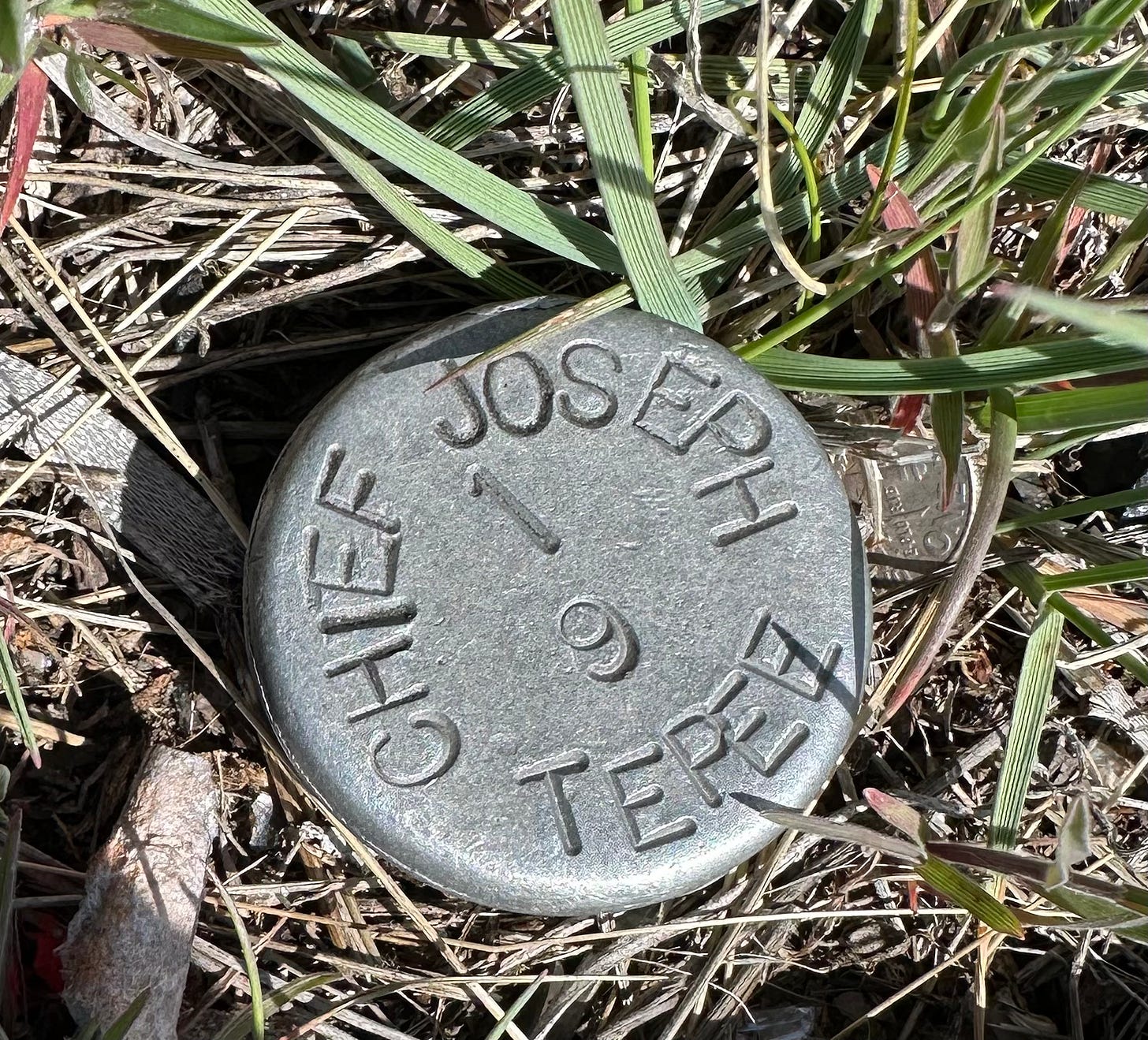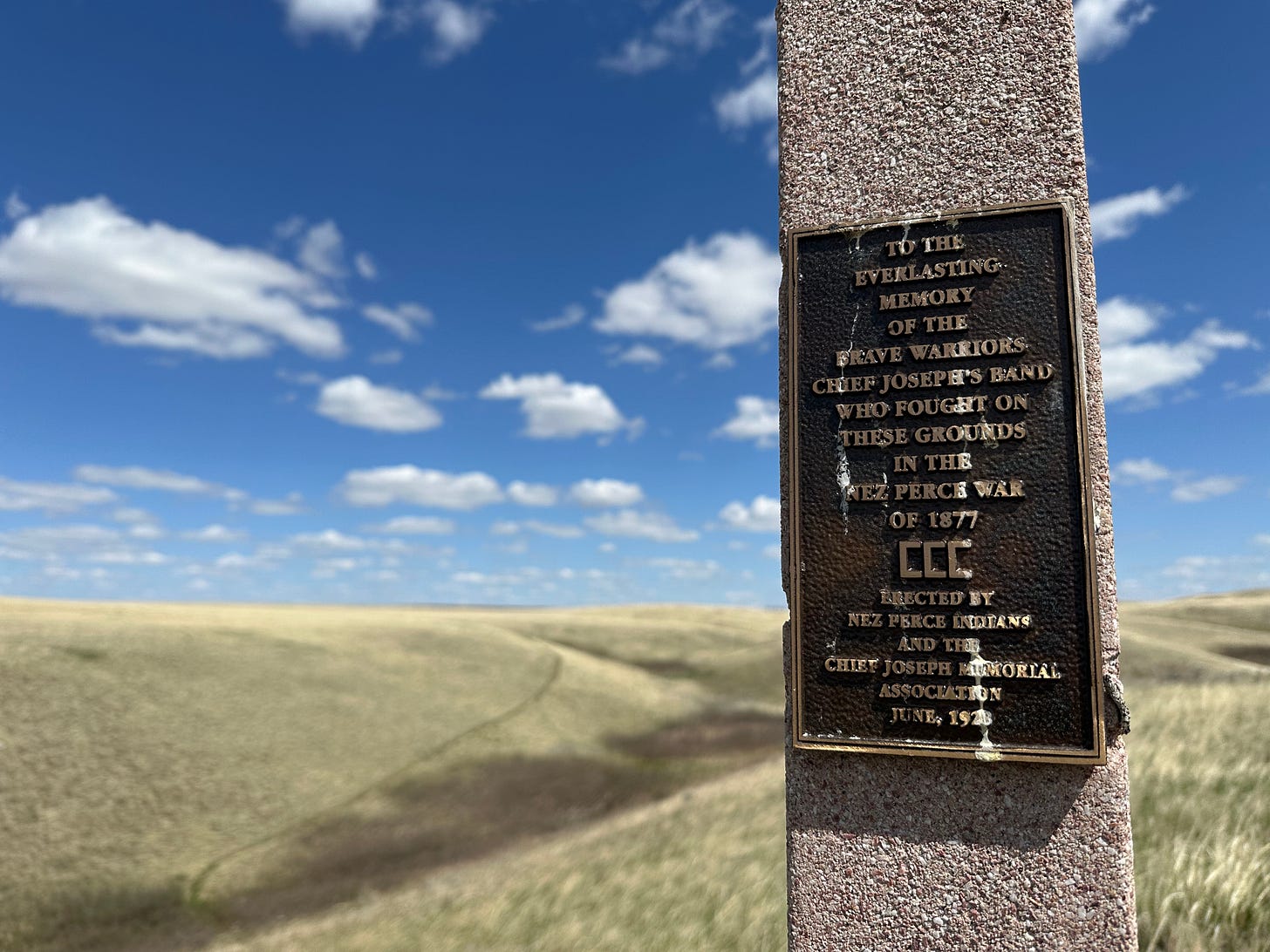I’ve been reading Strange Empire by Joseph Kinsey Howard so I can learn more about Louis Riel. According to Chris La Tray he’s the most written-about political figure in Canada but I don’t know a thing. So I’m trying to educate myself. The tome on my bedside table is pretty dense with a lot of late-nineteenth-century Canadian politicking but it’s fascinating if I can keep my mind on it.
Not too far back, I reached a section about tribes in the US, specifically those in what we now call Montana. Smallpox had wrought its devastation, followed by decimation of the buffalo herds. Soldiers and frontier militia types were wreaking mayhem all over the Northern Plains. Howard delves into the Marias massacre, Battle of Little Bighorn, the Big Hole, and the battle at Bear Paw where Chief Joseph ultimately surrendered. These are events I’m familiar with, given my erstwhile status as a Montana history teacher and current Native American Studies instructor.
A few weeks ago I was doing some language work with my partners at Ft Belknap and realized I’d be finished with my last meeting by midafternoon. Returning to Havre, where I invariably stay in room 216 of “the Best Western on the hill,” requires a quick hour-long jaunt west on the HiLine through Chinook. Just a handful of miles south of Chinook is the Bear Paw Battlefield, so I decided to visit.
I took back roads and stopped multiple times to listen to meadowlarks call out their lovely whistling songs. Horned larks exploded out from the edges of the gravel. I tried to sketch some speedgoats1 but they sprinted away.
The battlefield was deserted and the vault toilets locked. Prairie dogs had made a mockery of the picnic shelter. It was windy so I tucked my hair into a cap and embarked on the interpretive loop trail. Signs warned of northern harrier nesting sites and rattlesnakes, but I saw neither. Keeping my eyes on the ground, I did find pins marking locations of various important tribal leaders’ lodges. Each was surrounded by offerings of all kinds, from coins and plastic flowers to sunglasses and ribbons. I added my own and moved along.
Atop a ridge overlooking the broad prairie stood a memorial erected by “Nez Perce Indians and the Chief Joseph Memorial Association” in what appears to read June 1928, just 51 years after the battle. I am 52 years old. Sometimes for me, thinking about how someone could have experienced something momentous and then this (smallish) number of years later still be alive to tell about it - it’s how I felt about my grandmother’s experience of the Depression. I suppose my children might feel this way about me having lived most2 of my life without the internet. Time has a way of quickly collapsing when you start rolling backwards into family generations.
To walk the loop trail on the Bear Paw Battlefield, wind shuffling the grasses and pushing at my cap brim, Franklin’s gulls with their childlike cries spinning overhead, is also a kind of time travel. The tree-lined dip where the women held soldiers at bay is marked with a number; fabric offerings flap from the branches. The place of Chief Joseph’s surrender carries a plaque. And the marker pins in the ground are like ghosts lingering silently at their posts as a reminder of humanity’s many faces, waiting for us to recognize them.
pronghorn
I suppose it’s more like half, now



